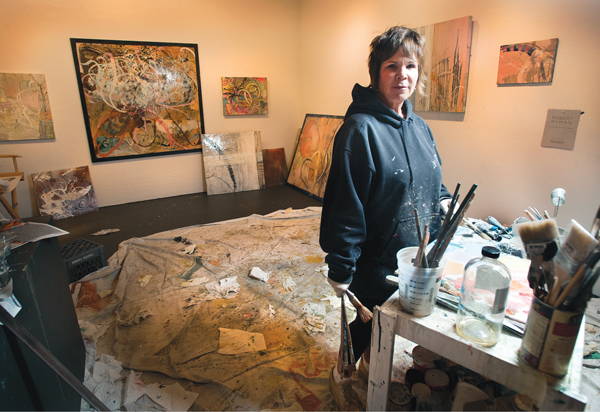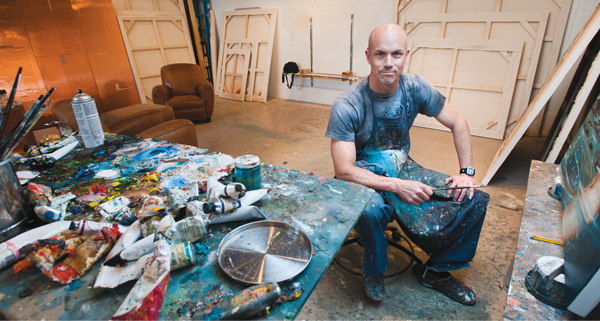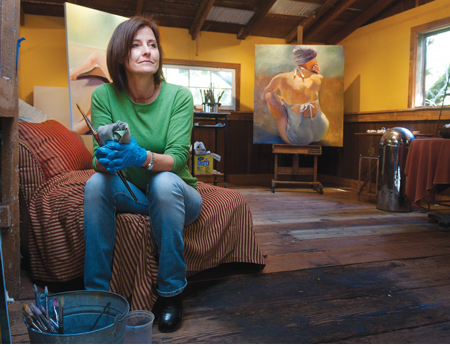Artists are a mystery to those of us with more prosaic lives. While we commute to our cubicles in the downtown towers of business districts, the lucky few in the artistic community retire to their ateliers, breathe deep the air of imagination and let the muse of creativity lead them through the day. ❡ Or so we fantasize. That’s why when painters, sculptors and weavers open their studios to the public, we flock to them like curious visitors to a carnival sideshow. Oh, see how they live! There are their paints! What whimsical furniture! ❡ Of course, open studios allow us to see wonderful works of art up close and meet their creators firsthand, but the voyeur who lives in all of us — the one who surreptitiously peeks into the closets of friends (and don’t we all?) — is thrilled most by the backstage pass into this normally cloistered corner of the art world. ❡ Perhaps the paint-spattered floors will reveal the key to innovation? Maybe the pungent varnishes will awaken dormant inspiration? Could that rack of half-finished canvases spur completion of our own inchoate dreams? ❡ Artists answer those questions in their studios by arranging them to do the one thing for which these creative spaces exist: work. ❡ Sausalito painter Georgette Osserman divides her third-floor studio in the ICB Building in Sausalito into halves, one for contemplation, the other for putting oil on canvas. In the active half, she says, “my mantra is ‘do.’ Do not think, just move. I work on lots of different things at the same time. I move from piece to piece. On a good day, I can dance for hours from one painting to the next making strides with each composition. On a tough day I may never leave the safety of my wing chair on the other side of the studio.” ❡ Eric Zener, a Mill Valley father of three known for his bright images of swimmers, paints in what he calls his “sanctuary” in an industrial building studio on Schoonmaker Point in Sausalito. “The studio is contrasted against the calm water, boats and the sounds of seagulls,” he says, “making it feel both like a place of ‘work’ but also a place of ‘reprise.’" ❡ Elizabeth Gorek’s studio is a work of art in itself— a slightly off-kilter 100-year-old barn made of ancient redwood, sitting adjacent to Gorek’s Ross home. The barn’s warm
yellow walls are bathed in soft natural light from several windows and wide front doors that open onto a quiet lane. “It’s a little creaky,” says Gorek, “and full of spiders, and lit with the help of a chandelier, but this is where I relax.”

Georgette Osserman

Eric Zener


